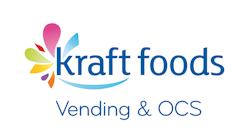NAMA did its final Spring Expo in Las Vegas in style last month, hosting a wealth of innovative equipment, products and technology.
The variety of tools can be overwhelming. There was the interactive “diji touch” machine from Crane Co. and Kraft Foods. There was a dedicated K-Cup vender with colorful Green Mountain graphics. There was a combination bill recycler/6-tube changer. A new motion-detecting, power sensor/monitor. And new single-cup coffee brewers.
An operator can only use so many tools, so do all these new products bring anything relevant to the table? It all depends on the individual operator.
NEW TOOLS, NEW OPPORTUNITIES
Because of the unique strengths and weaknesses of individual operators, each owner has to take it upon him or herself to decide what does and doesn’t fit his or her needs. It’s a big responsibility, but at the same time, few industries offer the individual owner as many ways to run their business as automatic merchandising.
While the industry has evolved and become more professional over the years, it remains exceptionally non-standardized in the way companies are managed and in the products and services they offer. This cannot be said for a lot of industries, and it cannot be said for any other retail industry.
Last month’s “case for vending” story noted that while startup costs are higher than ever to get into the industry, automatic merchandising remains a viable business for newcomers who are properly capitalized and know what they’re doing.
AN INDUSTRY OF INDIVIDUALS
An even more unique aspect is that there are so many ways to do things and succeed. There are still operators using post-mix cold cup drink machines — successfully. There are some still using water soluble hot beverage venders — successfully.
There are operators who find comprehensive planograms beneficial and others, also successful, who give drivers full freedom to select product from the warehouse.
There are operators who focus on only vending and/or OCS; (the specialization-versus-mutliple-services debate continues.) There are those who offer office products and janitorial supplies. Some do catering, manual foodservice, water service, and mobile catering. Others are rediscovering wholesale distribution, also known as “provisioning.”
While certain tools and concepts prove more successful than others, the operator’s own commitment has more bearing on the success of the business than the tools and concepts he or she chooses to use.
A committed operator communicates the confidence he or she has in a particular tool or concept to employees and customers.
MORE CHOICES, MORE QUESTIONS
During a panel discussion on remote monitoring at Spring Expo, one software executive noted that employees need to accept a new way of doing things for this technology to deliver its benefits. Not every operator in the audience felt their staffs were up to doing this, and not everyone believed that such a change would benefit their company.
Nevertheless, the new tools are creating new opportunities for operators to do things more effectively and efficiently.
It has been postulated by some that technology will result in greater standardization of operating methods. On the other hand, these new tools could deliver the opposite scenario.







